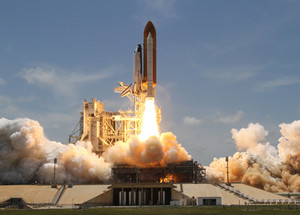
A slightly weakened but still powerful Hurricane Earl continues on its path drawing nearer to the United States East Coast. In recent days, astronauts aboard the International Space Station have been afforded stunning views of the storm from their 220 mile high perch.
According to the National Hurricane Center (NHC), Hurricane Earl’s forecast path will bring it dangerous close to the East Coast from South Carolina through Maine. The center of the storm is expected to remain at sea however the centers “cone of uncertainty” includes much of the coast.
Astronaut Douglas Wheelcock is the commander of the Expedition 24 crew now on board the space station. The West Point graduate and Army colonel previously logged hundreds of hours aboard the Space Shuttle and is in the third month of a six-month stay commanding the ISS.
Like other recent visitors to the space station, Wheelcock is keeping the public up to date with the crew’s activities via Twitter. As the user ‘Astro_Wheels’, Wheelcock has used the messaging service to report on repairs to the station and ongoing experiments and now has posted extraordinary photos of Hurricane Earl.
The two images of the powerful hurricane span roughly 17 hours. The first, taken over the central Atlantic on Monday shows Earl when it was a Category 2 storm with loose, rotating bands. The second, taken this morning, shows how much more organized – and powerful – the storm has become.
The slideshow below contains the images taken by Colonel Wheelcock as well as images of previous hurricanes taken by International Space Station and Space Shuttle crews and NASA satellites.






.jpg)

.jpg)







